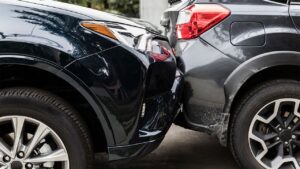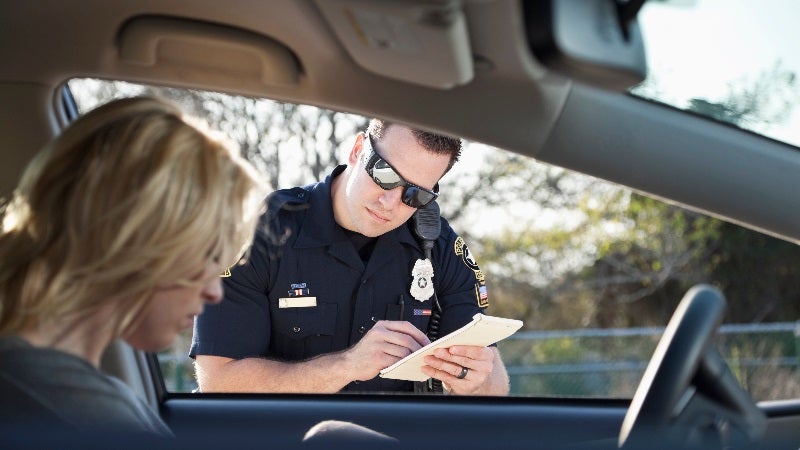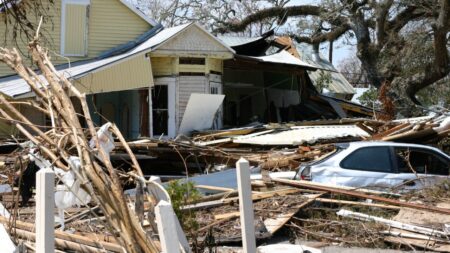Driving under the influence of alcohol or drugs is one of the single most expensive mistakes you can make on the road. If you’re charged with a DUI, fines can start at as little as $100 depending on your state’s laws — but the total cost of a DUI can add up to tens of thousands of dollars or more. One of the biggest costs associated with a DUI comes in the form of inflated insurance rates, which can add thousands of dollars per year to your living expenses.
How much does car insurance go up after a DUI?
On average, a single DUI charge raises the average cost of full coverage auto insurance by $2,198 per year, or $183 per month. The cost of state minimum coverage nearly doubles after a DUI, from just $664 per year to $1,309.
Insurance companies charge more after a DUI because it’s a serious moving violation that carries a high risk of accidents, injuries, property damage and the claims that come with them. If you were lucky and didn’t get in a crash while driving under the influence, only your DUI charge will raise the cost of your insurance. But an at-fault accident on your record — especially one that resulted in significant injuries or fatalities — won’t just result in more serious criminal charges; it may also cause a bigger hike in your insurance rates or even being dropped altogether.
Keep in mind that not all insurance companies deal with DUIs in the same way. Some insurers, like American Family and Progressive, tend to institute smaller rate hikes for customers with DUIs, while others penalize this offense more severely. Some insurers, like State Farm, may not even write policies for drivers with DUI convictions. The table below compares average rates from Quadrant Information Services from a range of carriers for drivers with and without DUI convictions. It’s important to note that the only way to know if your preferred carrier will offer you a policy after a DUI is by requesting a quote.
| Company | Avg. cost of full coverage premium | Avg. full coverage premium after a DUI | Difference |
|---|---|---|---|
| Allstate | $3,054 | $5,035 | $1,981 |
| American Family | $2,689 | $3,377 | $688 |
| Amica | $2,925 | $8,390 | $5,465 |
| Auto-Owners | $1,756 | $3,754 | $1,998 |
| Chubb | $3,542 | $7,743 | $4,201 |
| Erie | $2,036 | $3,634 | $1,598 |
| Farmers | $3,332 | $7,547 | $4,215 |
| Geico | $2,023 | $4,622 | $2,599 |
| Nationwide | $1,905 | $4,431 | $2,526 |
| Progressive | $2,254 | $3,117 | $863 |
| Travelers | $2,001 | $3,786 | $1,785 |
| USAA | $1,921 | $3,547 | $1,626 |
| *All rates displayed are average annual rates as of October 2024. |
Other financial implications of a DUI
The financial consequences of a DUI aren’t just limited to a fine and insurance surcharges. There are numerous other fees associated with receiving a DUI citation, which could add up to thousands of dollars over several years. While actual costs might vary based on state and situation, American Addiction Centers estimate that a DUI could cost between $10,000 to $25,000 or more.
Some potential expenses after a DUI could include:
- Fines
- Posting bond
- Car towing or impound fee
- Attorney costs
- Court and jail fees, including sentencing and probation
- Random drug screenings
- Driving school
- Ignition interlock installation
- License reinstatement fee
- Lost income from court and/or jail time
- Alternate transportation due to license suspension
How to lower auto insurance rates after a DUI
On average, a driver with a DUI sees their full coverage car insurance go up by 92 percent after a DUI charge. Here are a few ways you might be able to save on your insurance following a DUI:
Research your state’s requirements
Not all states treat DUIs the same, so research your state’s requirements regarding DUI and DWI charges. You may need to look into non-standard auto insurance, as well as which car insurance carriers will submit an SR-22 or FR-44 on your behalf to the DMV.
Shop around
Each insurer measures risk differently. Shopping around and comparing car insurance companies could help you find cheaper auto insurance rates, even after a DUI. Many other factors, like your location, type of vehicle, annual mileage and more could influence your final rate.
Check discount opportunities
If you’ve received a DUI citation, you likely won’t be able to earn a good driver discount for at least a few years. However, that’s not the only car insurance discount available. If you own your home, you could add a multiple policy discount by bundling your home and auto insurance with the same carrier. You could also get a discount by being a member of certain affiliate or professional groups, keeping your annual mileage low and more.
Practice safe driving habits
Safe drivers typically enjoy some of the lowest car insurance rates, so it helps to be mindful of your driving habits. Some car insurance companies offer telematics programs that can reward you with discounts for not braking hard or accelerating quickly, driving less and avoiding late night driving when accidents are more likely to occur.
Maintain continuous coverage
While you might be tempted to let your car insurance lapse in the face of steep DUI rates, it may not be the right move. Car insurance is mandatory in every state after a DUI — and even if your license is suspended or you get rid of your car, maintaining coverage may be necessary to keep you in compliance with the law. It could also help you avoid the steep rates associated with a lapse in coverage if you plan to get car insurance any time in the future.
The differences between DUI, DWI, OVI and OUI
For the sake of simplicity, we refer to convictions from driving under the influence of drugs or alcohol as a DUI. But there are several related terms that are often categorized together:
- DUI: Driving under the influence
- DWI: Driving while impaired or intoxicated
- OUI: Operating under the influence
- OVI: Operating vehicle intoxicated
- OMVI: Operating a motor vehicle impaired
Many of these distinctions vary based on the state you’re in. DUI and DWI are terms often used interchangeably, but a state may use just one of these to refer to a driver with a blood alcohol level above the legal limit. If that’s the case, then a DWI typically has the stronger penalty compared to a DUI. In many states, these offenses also apply to driving while under the influence of drugs.
Some states use alternative acronyms like OUI, OVI and OMVI to include broader types of vehicles. For example, states like Ohio got rid of “OMVI” in favor of OVI so that people riding bikes or other non-motorized vehicles could also be held accountable while doing so under the influence of drugs or alcohol.
Frequently asked questions
Methodology
Bankrate utilizes Quadrant Information Services to analyze October 2024 rates for all ZIP codes and carriers in all 50 states and Washington, D.C. Rates are weighted based on the population density in each geographic region. Quoted rates are based on a single, 40-year-old male and female driver with a clean driving record, good credit and the following full coverage limits:
- $100,000 bodily injury liability per person
- $300,000 bodily injury liability per accident
- $50,000 property damage liability per accident
- $100,000 uninsured motorist bodily injury per person
- $300,000 uninsured motorist bodily injury per accident
- $500 collision deductible
- $500 comprehensive deductible
To determine minimum coverage limits, Bankrate used minimum coverage that meets each state’s requirements. Our base profile drivers own a 2022 Toyota Camry, commute five days a week and drive 12,000 miles annually.
These are sample rates and should only be used for comparative purposes.
Incidents: Rates were calculated by evaluating our base profile with the following incidents applied: clean record (base) and single DUI conviction.
Read the full article here
















